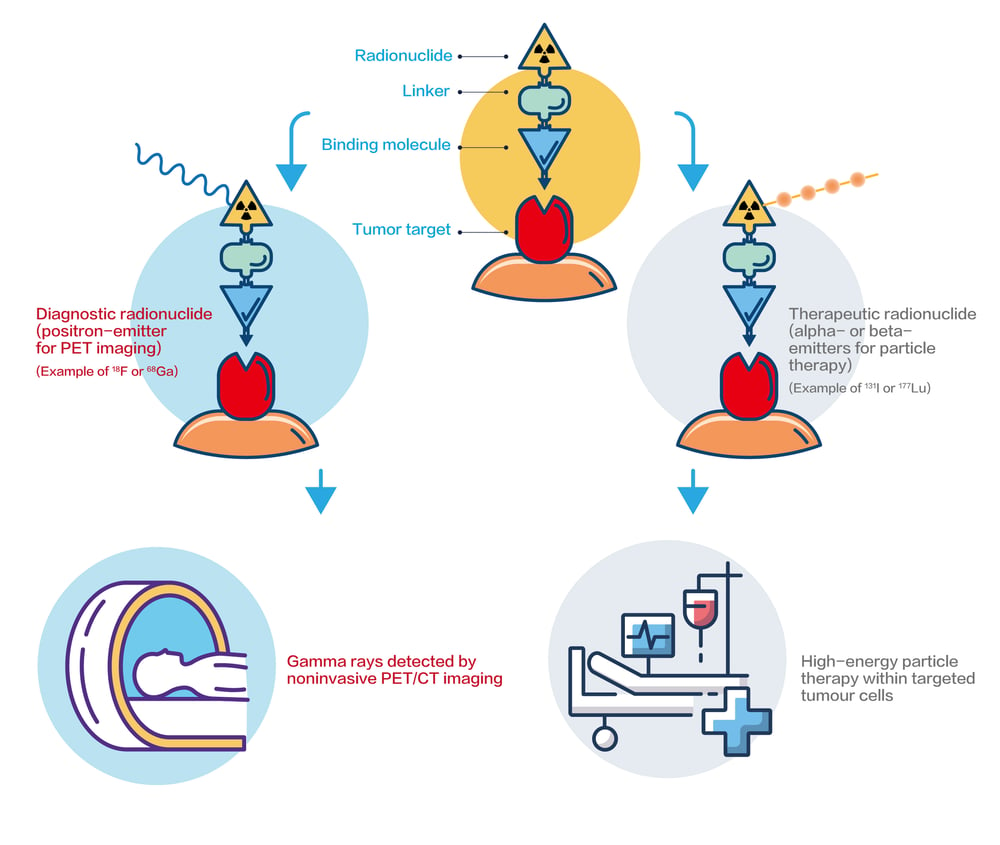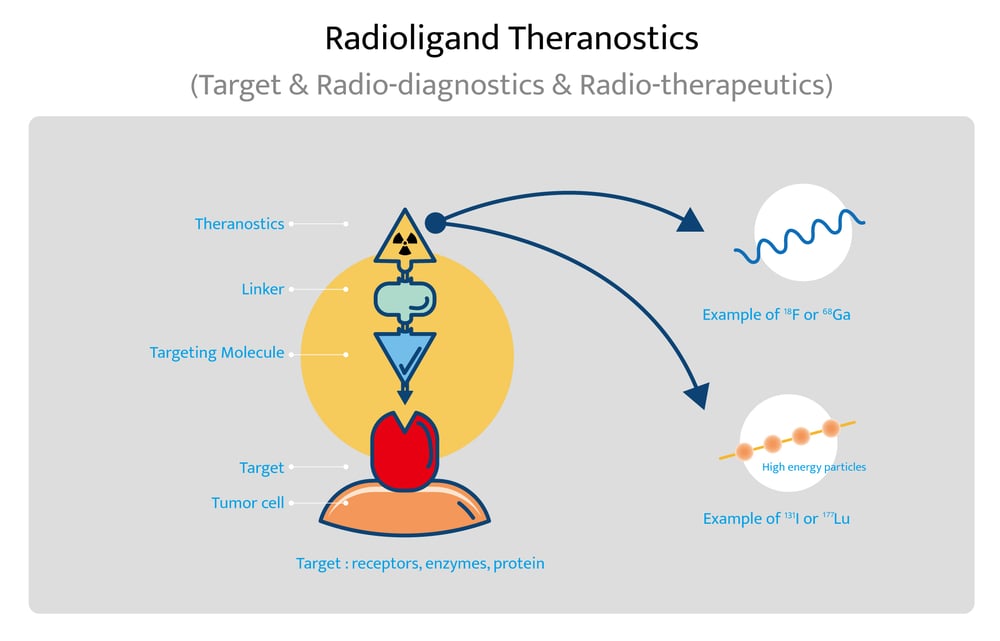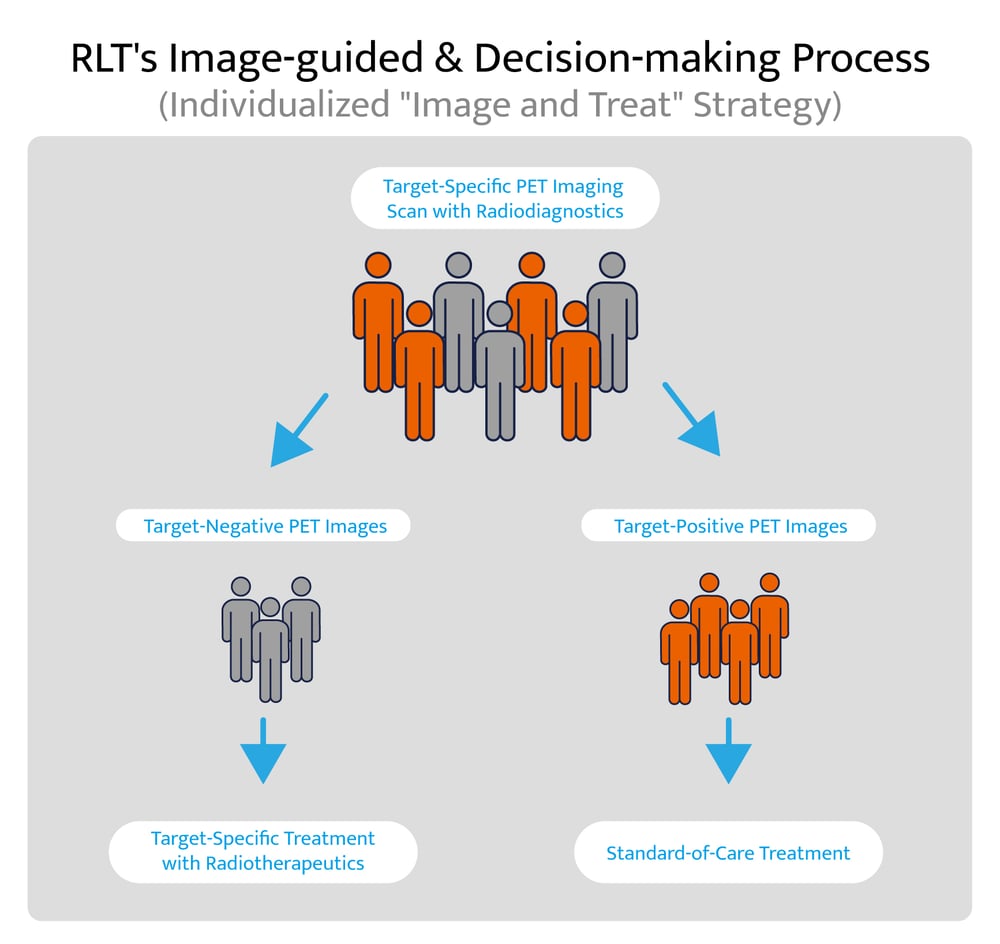Radioligand theranostics
Current precision therapeutic modalities used in cancer management eventually meet treatment limitations. In order to improve efficacy and drug response for cancer treatment, we need a new technology that evolves cancer treatment and integrates precision medical approaches for cancer management.
And the answer is a technology that offers target-specific treatment modes, which is radioligand theranostics, or RLT.
How does RLT work?
Radioligand theranostics, or RLT, is an advanced personalized medical treatment that combines radiodiagnostic and anti-cancer therapeutics. The stated target of RLT is no longer the cancer cell or the organ, it is the molecular characteristics of the tumor cell, such as the receptor and protein of the tumor cell or the cancer-specific factors of the tumor microenvironment (TME).
RLT combines and couples with adiodiagnostics and radiotherapeutics to become a targeted anti-cancer treatment with dual-mode PET diagnostics-guided radioligand therapy. Eventually, RLT is an optimized solution for both diagnosis and treatment based on the same molecule with a specific diagnostic or therapeutic radionuclide.

What is Primo’s novel radioligand theranostics?
Primo aims to develop novel radioligand theranostics that are targeted anti-cancer drugs with the dual-mode characteristics of both PET-diagnostics and radioligand therapy. This approach comprises three parts.
Targeting molecule
Targeting molecule stands for the molecular-targeted characteristics of RLT and can specifically bind to targeted receptors, enzymes, and proteins of the tumour cells of a specific cancer.
Linker
The linker is designed for the tight linkage between the targeting molecule and the radionuclide within an RLT-type drug and maintaining the biological stability of such RLT drugs.
Radionuclides
The positron-emitter (18F or 68Ga) for diagnostic purposes and alpha or beta emitters (177Lu or131I) for therapeutic purposes of an RLT drug determine the nature of such a drug, whether for diagnosis or treatment in disease management.

RLT’s image-guided decision making process
With the help of Primo’s novel RLT drugs, physicians can proceed with personalized and precision management based on the image-guided RLT decision-making process.
First, using diagnosis-purposed RLT to conduct non-invasive imaging on the patient to detect the existence of a specific cancer cell and the allocation and cell count to determine subsequent treatment options. Based on results, physicians evaluate how to proceed with RLT-specific therapy, conventional therapy, or combined therapy for further treatment along with other multidisciplinary teams. The purpose is to offer each cancer patient a precise and holistic medical service, increase survival, and improve resultant patient quality of life.
